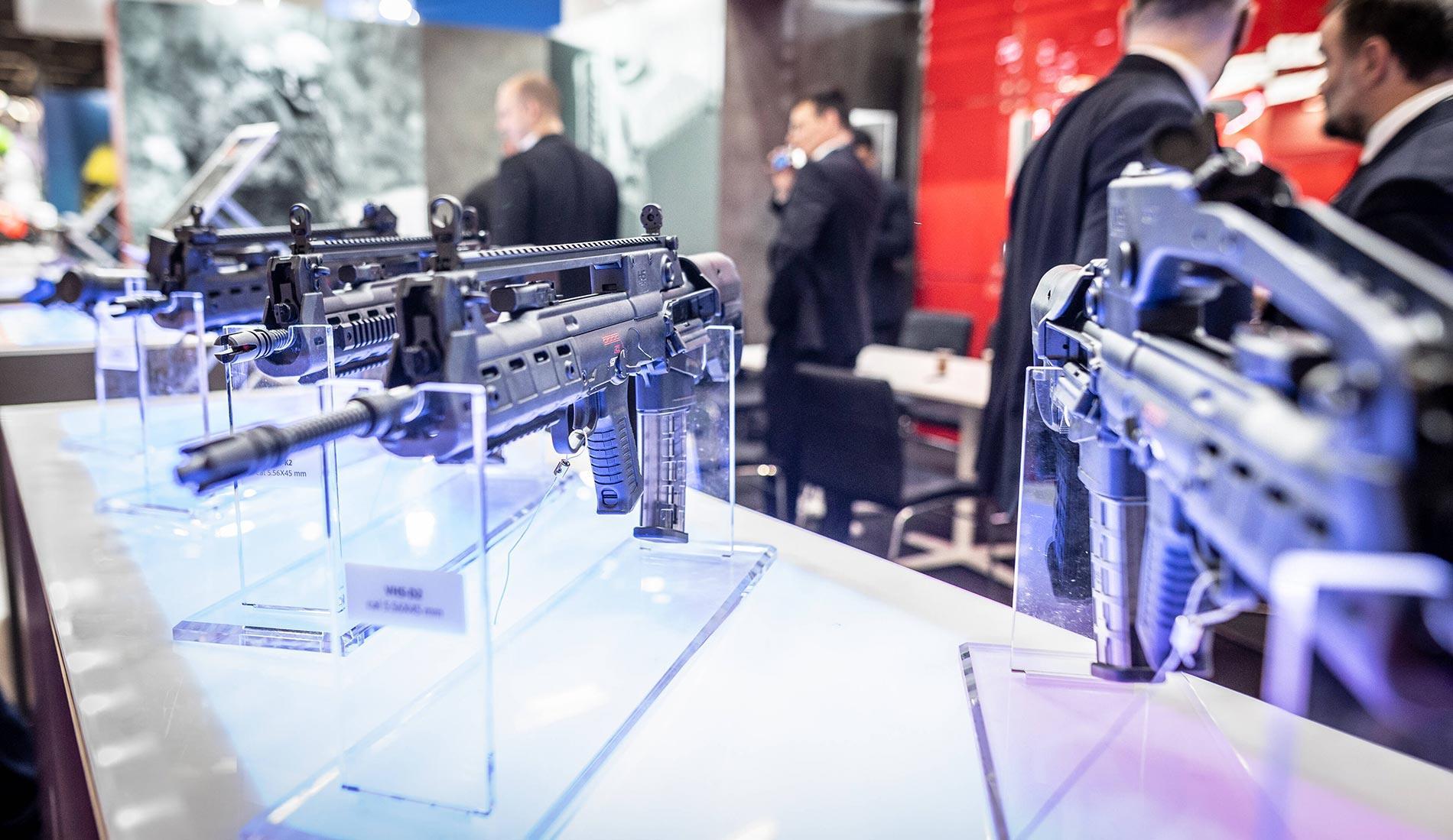SIPRI has an extensive arms industry database summarizing total arms and military services sales by the Top 100 companies worldwide, and has released its latest report on this in December 2021. Based on the data and report, the global arms industry is business as usual despite the pandemic.
Lena Krikorian, 1 February 2022
The Stockholm International Peace Institute (SIPRI) – an independent research institute focusing on global security – has an extensive and informative Arms Industry Database that includes public and private financial information on arms-producing and military services companies, herein referred to as arms companies. The Database was created in 1989 and previously did not account for countries in Eastern Europe and the former Soviet Union. From 2015 onwards, it has included data on post-Soviet and some Chinese companies where data is available and reliable.
Utilizing open-source media such as journals, newspaper articles and company annual reports, the SIPRI Arms Industry Database provides estimates of arms sales by arms companies, but it does not account for international transfers, manufacturing or maintenance of arms by the armed services of a given country worldwide. SIPRI publishes another database on arms transfers that encompasses the volume of “actual deliveries of major conventional weapons” to, from and between all parties in a specific time period according to SIPRI’s Arms Transfers Database Methodology. The latest Arms Transfers Database is from March 2021 and a new one will be released in spring 2022.
SIPRI collected two data sets from 2002-2020: one is a data set for the Top 100 arms-producing companies based on the value of their arms sales per year. In 2020, the top three companies engaged in arms sales were from the United States, China and the United Kingdom. The following companies are listed as the top 10: Lockheed Martin Corp., Raytheon Technologies, Boeing, Northrop Grumman Corp., General Dynamics Corp., BAE Systems, NORINCO, AVIC, CETC, and L3Harris Technologies. It is worth noting that data from China is from 2015 because this data is reliable, whereas other data sets from Chinese companies are still under review. The other data set summarizes the current value of total arms sales in billions of U.S. dollars for the SIPRI Top 100 companies from 2002-2020. In that time frame, the latest data set gives the increase in total global arms sales at 164% in current terms. In one year, from 2019-2020, the total arms sales of the top 100 companies increased by 2.4 percent in current terms, and by 1.3 percent in constant terms. Today’s Military Industrial Complex (MIC) has profited despite COVID.
On 6 December 2021, SIPRI released both data sets and its latest report on arms sales entitled “Business as usual? Arms sales of SIPRI Top 100 arms companies continue to grow amid pandemic.” The report summarizes key trends that offer explanations of the current data sets. Despite the COVID-19 pandemic and related negative global economic impacts, the report and data underscore that overall global arms sales increased as governments experienced an increase in demand for military goods and services. Some companies in countries that had government-imposed lockdowns had to mitigate the losses, delays and disruptions related to these lockdowns.
The report highlights that the U.S. held the highest rank in the SIPRI top 100 with the arms sales of 41 US companies totaling USD 285 billion in 2020. The next highest arms sales are from China and certain European countries (namely the UK, some EU Member States and Russia). As indicated in the report, the U.S. has held the top five arms sales in the database since 2018.
Despite the lack of available and reliable data since 2015, Chinese arms companies rank second among the Top 100 at approximately USD 66.8 billion, which translates into 13 percent of the total top arms sales worldwide in 2020. According to the report, Chinese arms companies are increasingly modernizing their military-civil navigation systems and related technologies along the government’s military-civil fusion programs.
For European arms companies in the Top 100, the report and data show “mixed results.” Twenty-six European companies comprise 21 percent of total global arms sales at USD 109 billion. According to the report, seven British companies experienced an increase of 6.2% from 2019 to 2020, amounting to USD 37.5 billion in arms sales. Arms sales from Germany’s four firms in the Top 100 rose by 1.3% from 2019-2020. The only multinational European firm based in London – BAE Systems PLC (British Aerospace Electronic Systems) – to make the Top 10 increased its arms sales by 6.6% to USD 24 billion in 2020. France experienced decreases in arms sales owing to delays on deliveries caused by the COVID-19 pandemic and lockdowns.
Similarly, the report states that Russian arms sales decreased, partially due to pandemic-related delays in deliveries and the end of the State Armament Programme which ran from 2011-2020. The newly approved Russian State Armament Programme 2027 allocates upwards of c. USD 306 billion for the next decade. This sum will be used for the procurement of military equipment, modernization of their military equipment, repairs and R&D. Investments are expected to equal those from the previous Programme 2020, without taking inflation into account.
In 2017, Russian arms sales reached their peak, comprising 5% of the total Top 100 list. Based on the data from the combined nine Russian firms on the Top 100 list, sales declined for a third year in a row. It is worth noting that the report indicates this downward trend may change because Russian arms companies are diversifying product lines in an effort to implement a government policy aimed at raising “civilian sales” to 30% by 2025 and 50% by 2030.
Outside of Russia, China, Europe and the U.S., the report also highlights a percent increase in total arms sales of Top 100 firms from the following countries: Israel, Japan, Singapore, South Korea, Turkey, Ukraine and India.
Based on SIPRI’s report sales by the Top 100 arms companies are on the rise from 2019. Despite the unexpected COVID-19 pandemic and related extraordinary economic factors, it is “business as usual” for the global arms industry. This is relevant because world leaders and other stakeholders can consider SIPRI’s extensive findings when making policy decisions.
Picture: Milipol Paris is the world’s leading event for safety and internal security of states. The 22nd edition took take place from October 19 to 22, 2021 at the Parc des Expositions de Paris-Nord Villepinte. © IMAGO / Le Pictorium
Other Articles Which Might Interest You
Cost Of War Project Of Brown University: The Price Of The Militarization Of Society






